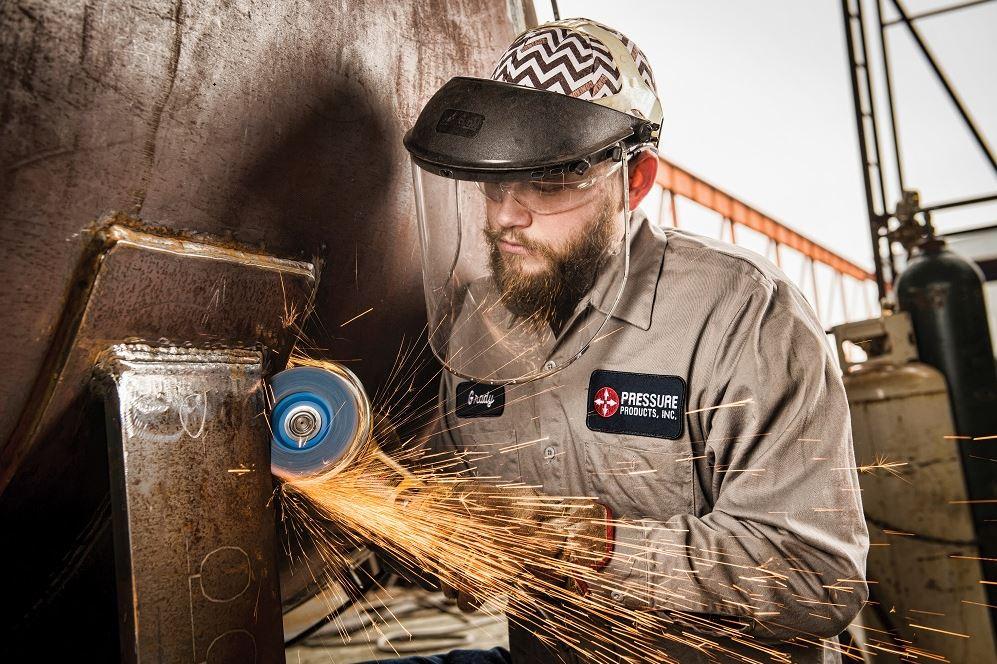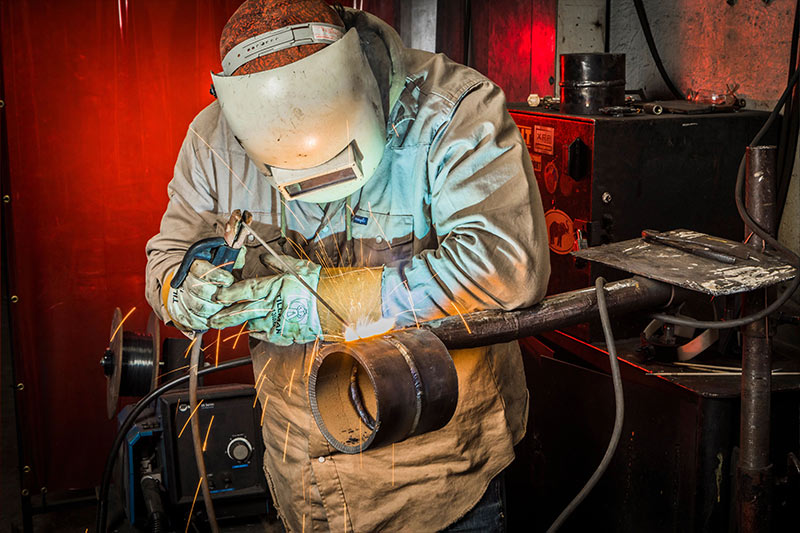Montana Mobile Welding and Repair Welding shares strategies on addressing heat distortion effectively
Everything about Welding: Key Insights Into Techniques and Best Practices for Success
Welding incorporates a range of techniques, each fit for specific materials and applications. Recognizing these techniques, such as GMAW, SMAW, and TIG, is essential for achieving optimal results. In addition, the appropriate equipment and security methods can not be ignored. As prep work and repairing play critical duties in the welding procedure, grasping these aspects can significantly enhance the high quality of the last product. What are the key factors that assure an effective weld?
Recognizing Various Welding Techniques
Welding methods include a selection of approaches, each fit to certain applications and products. Amongst one of the most common techniques are Gas Metal Arc Welding (GMAW), Secured Metal Arc Welding (SMAW), and Tungsten Inert Gas Welding (TIG) GMAW, also referred to as MIG welding, is preferred for its rate and versatility, making it ideal for thin products. SMAW, or stick welding, is preferred for its simplicity and performance in outside settings, specifically with thicker steels. TIG welding supplies accuracy and control, making it ideal for detailed job and non-ferrous steels (Montana Mobile Welding and Repair Fabrication). Each strategy has its distinct benefits and factors to consider, permitting welders to pick the very best approach based on the project's requirements, product kind, and preferred outcomes. Understanding these strategies is necessary for effective welding
Necessary Welding Devices and Devices
While numerous welding techniques need particular skills, the right tools and tools are equally necessary for attaining quality outcomes. Necessary welding tools includes welding machines, which differ depending upon the method-- such as MIG, TIG, or stick welding. Protective equipment, including aprons, gloves, and headgears, assurances security and convenience during the procedure. In addition, fixtures and clamps help protect products in position, guaranteeing precision in welds. Consumables like welding poles, wire, and securing gas are likewise crucial parts that affect the top quality of the weld. Devices such as cutters and grinders assist in surface area prep work and post-weld completing, adding to a professional end result. Purchasing premium devices eventually improves the effectiveness and efficiency of welding tasks.
Security Practices in Welding
Correct safety methods are important in the welding sector to shield employees from prospective dangers. Welders must wear ideal individual protective equipment (PPE), including safety helmets with appropriate shading, handwear covers, and flame-resistant apparel. Appropriate ventilation is crucial to lower direct exposure to harmful fumes and gases produced during the welding process. Furthermore, employees should be trained in the proper handling of welding tools to stop mishaps. Fire precaution, such as maintaining combustible materials far from the welding location and having fire extinguishers easily available, are necessary. Regular inspections of tools and work spaces can aid recognize possible risks before they bring about mishaps. By adhering to these safety techniques, welders can develop a much safer working environment and lessen risks related to their profession.
Preparing Materials for Welding
Preparing materials for welding is a vital action that substantially influences the quality and integrity of the last item (Fabrication). Correct preparation includes cleaning up the surface areas to remove pollutants such as oil, dust, and corrosion, which can compromise the weld. Methods such as grinding, sanding, or making use of solvents are frequently employed to attain a clean surface. Additionally, guaranteeing that the products fit together comfortably is important; voids can lead to weak welds. It's likewise crucial to take right into account the alignment and positioning of the elements, as this will certainly affect the simplicity of welding and the last outcome. Picking the ideal filler material and making sure compatibility with the base steels is necessary for attaining solid, long lasting welds.
Tips for Achieving High-Quality Welds
Accomplishing high-grade welds calls for focus to information and adherence to ideal methods throughout the welding process. Proper joint preparation is important, making certain surface areas are clean and free from pollutants. Choosing the proper filler material and welding technique based upon the base metals is critical for ideal bonding. Keeping consistent travel speed and angle while welding can prevent problems and advertise harmony. Additionally, controlling warmth input is crucial; extreme warmth can bring about warping and weakened joints. Routinely evaluating the welds throughout the procedure permits immediate changes if required. Utilizing ideal post-weld treatments, such as cleaning and stress alleviation, can improve the longevity and stability of the weld, inevitably making certain a successful outcome.
Fixing Typical Welding Issues
Welding usually presents challenges that can influence the top quality and honesty of the end product. Usual concerns such as porosity, inconsistent weld grains, and getting too hot can emerge, each needing certain troubleshooting methods. Recognizing these troubles is essential for welders to boost their abilities and achieve excellent results.
Porosity Problems Clarified
Although porosity can typically be overlooked, it continues to be a critical issue in welding that can jeopardize the stability of an ended up item. Porosity refers to the presence of small gas pockets within the weld bead, which can weaken the joint click here and lead to early failing. This issue usually develops from pollutants, moisture, or inappropriate securing gas insurance coverage during the welding procedure. To alleviate porosity, welders must verify that the base products are tidy and completely dry, utilize appropriate shielding gases, and keep constant welding specifications. Regularly evaluating the tools and setting can likewise help recognize possible problems prior to they manifest in the weld. Attending to porosity effectively is essential for attaining solid, long lasting welds that satisfy quality requirements.

Inconsistent Weld Beads
Inconsistent weld beads can substantially impact the top quality and toughness of a completed product. Numerous aspects add to this issue, including incorrect traveling speed, incorrect amperage setups, and irregular electrode angles. When the welder moves as well promptly, a grain may show up slim and do not have penetration, while moving as well slowly can create too much accumulation. In addition, making use of the wrong amperage can result in either damaging or extreme spatter, both of which compromise weld honesty. The welder's method, such as inconsistent lantern motion, can also cause uneven grain appearance. To reduce these issues, welders must concentrate on keeping consistent, controlled motions and guaranteeing correct devices settings to attain harmony in their welds. Consistency is vital to accomplishing reputable and strong welds.
Getting Too Hot and Warping Issues
Too much warm throughout the welding process can result in significant overheating and buckling concerns, influencing the structural honesty of the work surface. These troubles frequently show up as distortion, which can endanger positioning and fit-up, making additional setting up challenging. Elements contributing to overheating consist of the choice of welding parameters, such as voltage and take a trip speed, as well as the kind of material being welded. To mitigate these problems, welders need to preserve consistent traveling rate and suitable warm input while monitoring the workpiece temperature. Furthermore, preheating or post-weld warm therapy can help relieve stress and anxieties brought on by rapid air conditioning - Belgrade Fabrication. Normal examination and adherence to finest practices are essential in protecting against overheating and making certain the longevity and dependability of bonded frameworks
Frequently Asked Concerns
What Are the Profession Opportunities in the Welding Market?
The welding industry offers diverse job opportunities, including placements as welders, educators, examiners, and engineers. Specialists can operate in manufacturing, construction, aerospace, and automotive industries, gaining from solid demand and competitive wages in numerous roles.
Exactly How Can I Enhance My Welding Speed Without Compromising Top Quality?
To boost welding speed without compromising high quality, one ought to practice reliable strategies, keep devices, maximize settings, and enhance hand-eye sychronisation. Routine training and looking for comments can also considerably add to attaining much faster, top quality welds.
What Accreditations Are Offered for Welders?
Many certifications exist for welders, including those from the American Welding Culture (AWS), the National Center for Building Education And Learning and Study (NCCER), and various industry-specific organizations. These credentials boost employability and show ability effectiveness.
Just How Does Welding Influence the Properties of Metals?
Welding influences the homes of metals by modifying their microstructure, which can lead to changes in ductility, firmness, and stamina. Warm input and air conditioning prices during the process significantly affect these material attributes.
Can I Bonded Dissimilar Metals Together?
